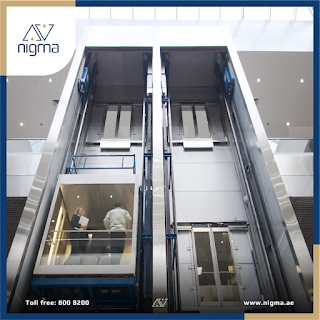Installing an elevator in a building is a significant decision that requires careful planning and consideration. Whether it's a new construction project or retrofitting an existing building, several factors need to be evaluated before proceeding with an elevator installation. This article outlines key considerations that building owners and developers should keep in mind to ensure a successful and efficient elevator installation process.

Building Usage and Occupancy
Traffic Flow
Evaluate the expected traffic flow within the building. Determine peak usage times, the number of people using the elevator simultaneously, and the frequency of elevator trips. This information helps in selecting the right elevator capacity and speed to meet the building's needs.
Building Occupancy
Consider the building's occupancy levels, including the number of floors, the types of occupants (residential, commercial, mixed-use), and any specific accessibility requirements for elderly or disabled individuals. These factors influence the design and specifications of the elevator system.
Structural Considerations
Space Availability
Assess the available space for elevator install, including the elevator shaft, machine room (if required), and landing areas on each floor. Ensure that there is sufficient vertical clearance and floor space to accommodate the chosen elevator system.
Structural Integrity
Evaluate the building's structural integrity to support the weight and movement of the elevator system. Consult with structural engineers to assess any modifications or reinforcements needed to ensure the safe installation and operation of the elevator.
Elevator Type and Specifications
Type of Elevator
Choose the appropriate type of elevator based on building requirements and usage patterns. Options include traction elevators, hydraulic elevators, machine-room-less (MRL) elevators, and more. Consider factors such as speed, capacity, energy efficiency, and maintenance requirements when selecting the elevator type.
Specifications
Define the specific specifications for the elevator system, including cabin size, door configuration, control systems, safety features, and aesthetic options. Customizing the elevator to meet the building's unique needs ensures optimal performance and user satisfaction.
Regulatory Compliance and Permits
Building Codes
Understand and comply with local building codes, regulations, and safety standards related to elevator installation. Ensure that the chosen elevator system meets all legal requirements and obtain necessary permits and approvals before commencing the installation process.
Accessibility Standards
Consider accessibility standards and guidelines for elevators, especially in buildings with public access or where accessibility is a priority. Install features such as tactile buttons, audible announcements, and adequate space for wheelchairs to ensure compliance with accessibility requirements.
Budget and Cost Considerations
Initial Investment
Determine the budget for the elevator installation, including equipment costs, labor expenses, permits, inspections, and any structural modifications required. Obtain quotes from reputable elevator installation companies and compare costs to stay within budget.
Long-Term Costs
Consider long-term costs associated with elevator maintenance, repairs, and energy consumption. Invest in energy-efficient elevators and maintenance plans to minimize operational expenses over the lifespan of the elevator system.
Maintenance and Service Plans
Maintenance Requirements
Understand the maintenance requirements of the chosen elevator system. Establish a regular maintenance schedule and plan for inspections, lubrication, component replacements, and emergency repairs as needed.
Service Contracts
Consider signing a service contract with the elevator installation company or a third-party maintenance provider. Service contracts ensure timely maintenance, emergency support, and compliance with safety regulations, extending the lifespan of the elevator system.
User Experience and Feedback
User Input
Gather feedback from building occupants, tenants, or users regarding their expectations and preferences for the elevator system. Consider factors such as speed, comfort, noise levels, and ease of use to enhance the overall user experience.
Test and Feedback
Conduct thorough testing of the elevator system before finalizing the installation. Test functionality, safety features, emergency procedures, and accessibility to identify any issues or improvements needed. Incorporate user feedback to make adjustments and ensure satisfaction.
Conclusion
Installing an elevator in your building requires thoughtful consideration of various factors, including building usage, structural requirements, elevator type, regulatory compliance, budget, maintenance plans, and user feedback. By carefully evaluating these considerations and working with experienced professionals, you can ensure a successful elevator installation process that meets the needs of occupants, enhances accessibility, and contributes to the overall functionality and value of the building














